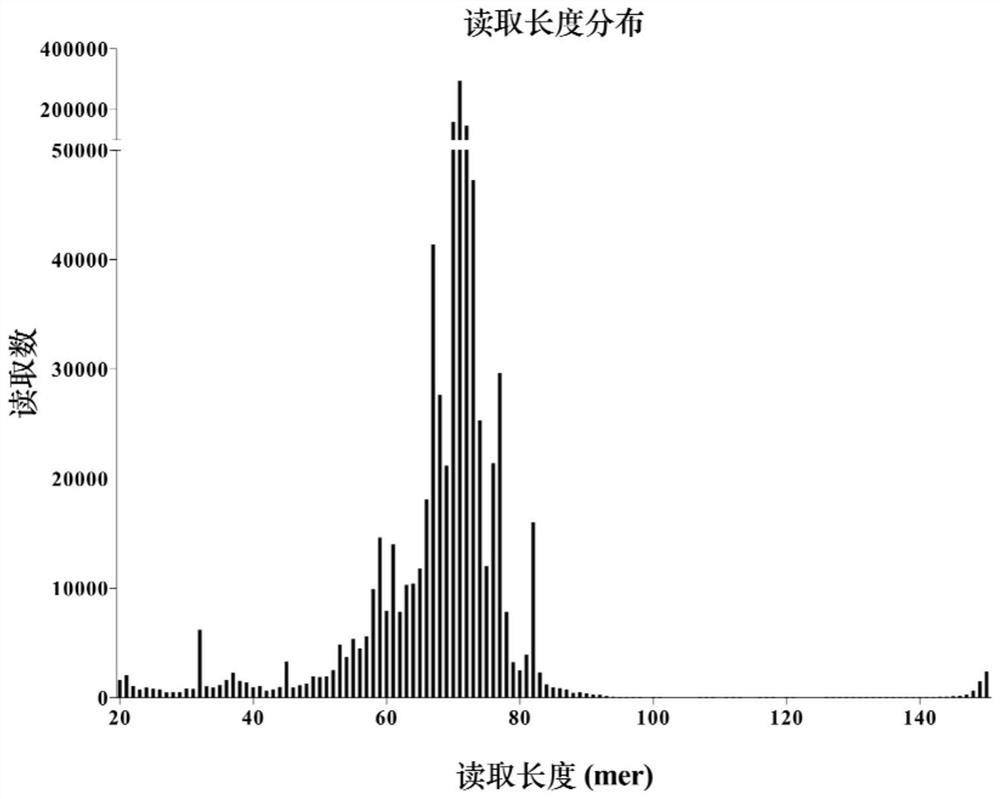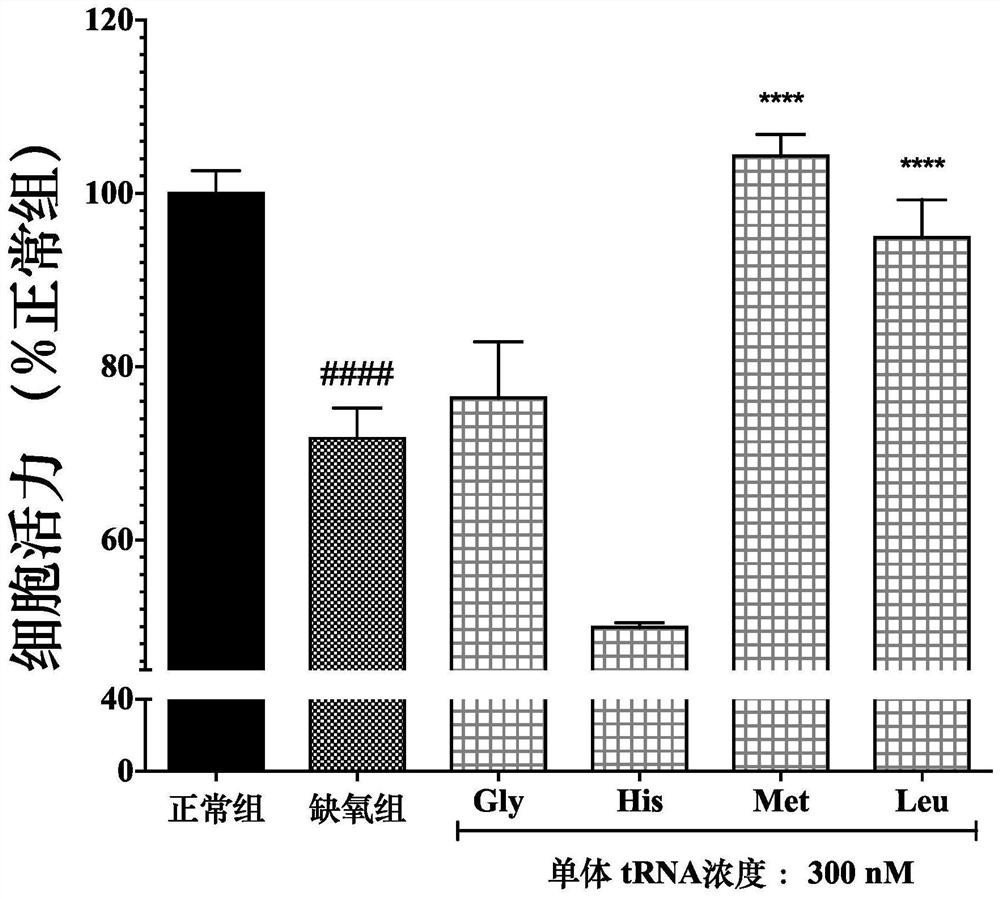Use of transfer rna molecules and fragments thereof for preventing or treating heart disease
A heart disease, molecular technology applied to a combination of drugs for the prevention or treatment of heart disease. , in the field of drugs for the prevention or treatment of heart disease, which can solve problems such as toxic side effects and large amount of treatment
- Summary
- Abstract
- Description
- Claims
- Application Information
AI Technical Summary
Problems solved by technology
Method used
Image
Examples
Embodiment 1
[0139] Example 1 Isolation of RNA molecules from plants of the genus Panax
[0140] The roots of ginseng (Panax ginseng C.A. Mey) were freshly collected and immediately stored in liquid nitrogen until use. By using the method of PARI (polysaccharase-aidedRNAisolation), from ginseng (Panax ginsengC.A.Mey) to extract RNA with a length of 200 nucleotides or less, that is, small RNA species, the method was developed by the inventor and his laboratory Personnel first described. Briefly, plant tissues were ground into a fine powder in liquid nitrogen and then homogenized in TRIzol reagent using a digital dispersion unit (IKA, Germany). After thorough lysis at room temperature for 10 min, an equal volume of chloroform was added, followed by centrifugation at 12,000 × g for 15 min at 4°C. Collect the supernatant and add 1 / 25 volume of sodium chloride and 1.25 times the volume of cold ethanol, and co-precipitate at -20°C for 30 minutes. The collected precipitate was hydrolyzed wit...
Embodiment 2
[0144] Synthesis of Example 2 RNA Molecules
[0145] The present inventors designed and synthesized RNA molecules with a length of about 19 to 22 bp based on the 58 isolated tRNA sequences in Example 1. In particular, a tRNA sequence is considered to have at least 3 parts, namely a 5'-terminal part (5'-t), a 3'-terminal part (3'-t), and an anticodon part. Each specially designed RNA molecule contains either part. For example, a designed RNA molecule containing the 5' terminal portion of the corresponding full-length tRNA sequence is called a 5'-t group RNA molecule; a designed RNA molecule containing the 3' terminal part of the corresponding full-length tRNA sequence is called a 3'-t group RNA molecule. Group RNA molecules; RNA molecules designed to contain the anticodon portion of the corresponding full-length tRNA sequence are called anticodon group RNA molecules. As shown in Table 2, the RNA molecule having the sense sequence selected from SEQ ID NO:1 to SEQ ID NO:232 a...
Embodiment 3
[0146] Example 3 The protective effect of RNA molecules on cardiomyocytes
[0147] Rat cardiac H9C2 cell line was cultured in DMEM medium containing 10% FBS and 1% penicillin / streptomycin, and in 5% CO 2 Cultured in a 37°C incubator with a humid atmosphere.
[0148] For cell viability assays, exponentially growing cells of cardiomyocytes H9C2 were seeded at a density of 5000 cells per well in 96-well microplates in 100 μL of medium and allowed to adhere for 24 hours before treatment. For the cardiomyocyte hypoxia model, the RNA molecules of continuous concentration obtained in Example 1 were added to H9C2 cells and placed in KRB buffer (sodium chloride 115mM, potassium chloride 4.7mM, calcium chloride 2.5mM, diphosphate Potassium hydrogen 1.2 mM, magnesium sulfate 1.2 mM, sodium bicarbonate 24 mM, HEPES buffer 10 mM, pH 7.4), and cultured at 37° C. for 3 hours in an anaerobic container (Stem Cell Technologies, USA). In the hypoxia-reoxygenation model of cardiomyocytes, H9C...
PUM
 Login to View More
Login to View More Abstract
Description
Claims
Application Information
 Login to View More
Login to View More - R&D
- Intellectual Property
- Life Sciences
- Materials
- Tech Scout
- Unparalleled Data Quality
- Higher Quality Content
- 60% Fewer Hallucinations
Browse by: Latest US Patents, China's latest patents, Technical Efficacy Thesaurus, Application Domain, Technology Topic, Popular Technical Reports.
© 2025 PatSnap. All rights reserved.Legal|Privacy policy|Modern Slavery Act Transparency Statement|Sitemap|About US| Contact US: help@patsnap.com



